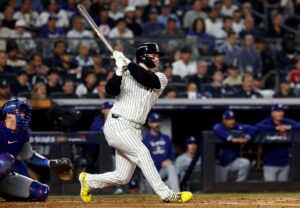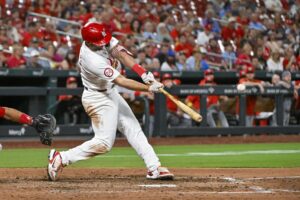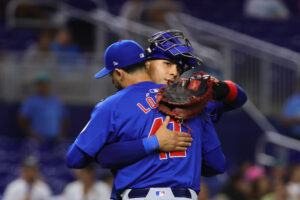This free agency period has not been as eventful as many expected. Lots of player movement has occurred, but the seemingly most-coveted stars are still available. The most visible examples are Bryce Harper and Manny Machado, but Marwin Gonzalez, Dallas Keuchel, and Craig Kimbrel also do not have contracts yet. For the second year in a row, Mike Moustakas – who is only 30 – is unsigned going into Spring Training. What in the name of Marvin Miller is going on here? Is it just the market playing itself out, or is it another example of MLB collusion?
The MLB Collusion Scandal of the 1980s
The Collective Bargaining Agreements have prohibited collusion between players or amongst owners since 1968. However, in the mid-80s, owners colluded anyway to epic proportions. It started when new commissioner Peter Ueberroth told them in late 1984 that they were foolish for being willing to lose millions in order to win a World Series. A few weeks later, he told them it was dumb to sign long-term deals. The owners apparently listened.
1985-86
In the 1985-86 off-season, of the top 20 free agents in WAR3, only five changed teams. (WAR3 = Wins Above Replacement over the previous three seasons.) Three of those five did not sign a contract until after the season began. It was so fishy that The Sporting News asked on its December 9, 1985, cover, “Why Won’t Anyone Sign Kirk Gibson? Have baseball owners taken a new stand on free agency?” Gibson was 28-years-old and the 1984 ALCS MVP. His WAR3 in ’85 was 12.1. Future Hall of Fame catcher Carlton Fisk had a WAR of 9.1. These guys should have had teams fighting over them, but neither player received any outside offers. Both re-signed with their current clubs on January 8, 1986.
1986-87
1986-87 was worse. 25 free agents had a WAR3 of 4.0 or greater. Of that group, only 13 had signed before February, and 10 stayed with their current team. Four more signed in February, but only one switched to a different team. In March, two players signed, both with different teams. One was future Hall of Fame outfielder Andre Dawson, whose knees could not handle the artificial turf in Montreal any longer. He and his agent went to the Cubs spring training camp in Mesa, Arizona with a blank contract in hand. Dawson signed it, handed it to Chicago’s GM, and told him to fill in the dollar amount. The Cubs wrote in $500,000 and added $200,000 worth of performance bonuses, which Dawson earned.
There were still five players left. Graig Nettles signed with Atlanta on April 1, six days before Opening Day. Three of the top four available players – Tim Raines, Doyle Alexander, and Rich Gedman – did not sign until May 1, and all stayed with their current teams. Pitcher Ron Guidry, ninth on the WAR3 list, also re-signed with the New York Yankees on May 1.
Collusion in MLB this off-season?
This off-season was nowhere close. There were 38 free agents with a WAR3 of 5.0 or higher. 27 have signed, and only four have stayed with the same team. Two of the remaining 11 are among the biggest names to hit the market in years. Of the 18 free agents with a WAR3 of 7.0 or higher, 13 have been signed. Only two: the Yankees J.A. Happ and C.C. Sabathia, have stayed with the same team. The five who are still unsigned are Machado (16.1 WAR3), Gio Gonzalez (8.9), Marwin Gonzalez (8.1), Ervin Santana (8.0), and Harper (7.5). Harper has reportedly said that he wants to get the biggest contract in baseball history. For a guy whose WAR3 is #15 out of the free agency class, that’s absurd.
Bottom line is, baseball has changed. Yesterday, new Cub reliever Brad Brach gave an interview that had some writers suggesting that collusion is in the air. He found it weird that six or seven teams came to him at the same time with the same offer. They all told him that they “had an algorithm.” He found it weird that they all used the same algorithm. However, it is not weird. Sabermetrics have revolutionized the game. Stat factories produce these algorithms. It is not at all unusual for these teams to have the same algorithm, especially if they got it from the same original source.
Spending Smarter
GMs have also grown wiser with their budgets. Baseball free agency kicks in later than it does in the other three major North American pro sports, after six years of service on a major league roster. Most players do not start their service time in the majors until age 23 or 24. This means that they will not become free agents until age 29 or 30. It just plain does not make sense to sign free agents of that age to long-term albatross contracts. Rarely do they remain good enough to warrant the huge salaries for the entire length of the deal. (Examples: Alex Rodriguez, Albert Pujols)
Both Harper and Machado are 26-years-old. A 10-year deal would end when they are 36. Keuchel and Kimbrel are 31. Most players see their production dwindle at age-36. It would be foolish to pay them $25-30 million after that happens. The team holding said player’s contract could release him, but unless someone else signs him, the team would still have to pay him. That’s a lot of money to waste. They could trade him, but the new team would have to take on that salary. Few if any are that foolish.
No Collusion in MLB
It is doubtful that owners are colluding. They have learned their lesson. The Collusion Scandals in the 80s resulted in a $280-million payment from the owners to the MLBPA in late 1990 and was an indirect reason for the devastating strike of 1994-95.
What is happening? The Invisible Hand of the market is playing itself out. Teams reportedly aren’t offering fat, long-term deals. Once Harper or Machado realizes this and signs, the dominoes will fall. The other mega-star will sign a similar deal. The teams will then sign the others very quickly with what budget they have left. That’s not collusion. That’s being fiscally wise.
Main Photo:
Embed from Getty Images






